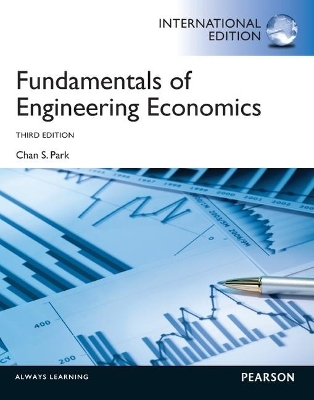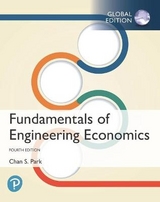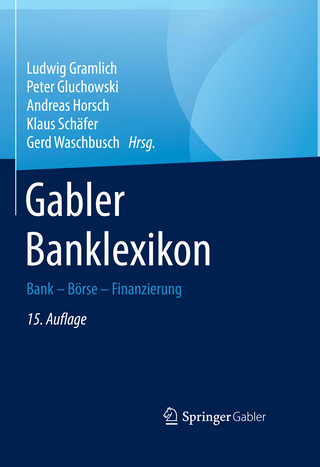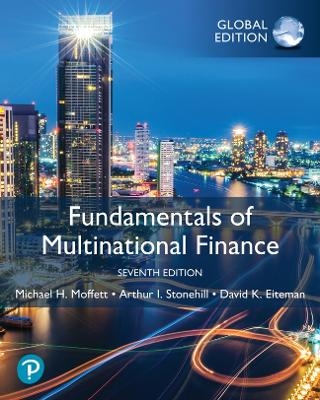
Fundamentals of Engineering Economics: International Edition
Pearson Education Limited
978-0-273-77291-0 (ISBN)
- Titel erscheint in neuer Auflage
- Artikel merken
From the author of the best-selling Contemporary Engineering Economics text, Fundamentals of Engineering Economics offers a concise, but in-depth coverage of all fundamental topics of Engineering Economics.
PART 1 UNDERSTANDING MONEY AND ITS MANAGEMENT 1
Chapter 1 Engineering Economic Decisions 2
1.1 The Rational Decision-Making Process 4
1.1.1 How Do We Make Typical Personal Decisions? 4
1.1.2 How Do We Approach an Engineering Design Problem? 7
1.1.3 What Makes Economic Decisions Different from Other Design Decisions? 9
1.2 The Engineer’s Role in Business 10
1.2.1 Making Capital-Expenditure Decisions 10
1.2.2 Large-Scale Engineering Economic Decisions 10
1.2.3 Impact of Engineering Projects on Financial Statements 12
1.3 Types of Strategic Engineering Economic Decisions 13
1.3.1 New Products or Product Expansion 14
1.3.2 Equipment and Process Selection 14
1.3.3 Cost Reduction 15
1.3.4 Equipment Replacement 16
1.3.5 Service or Quality Improvement 16
1.4 Fundamental Principles in Engineering Economics 17
Summary 18
Self-Test Questions 19
Problems 19
Chapter 2 Time Value of Money 20
2.1 Interest: The Cost of Money 22
2.1.1 The Time Value of Money 22
2.1.2 Elements of Transactions Involving Interest 24
2.1.3 Methods of Calculating Interest 26
2.2 Economic Equivalence 28
2.2.1 Definition and Simple Calculations 29
2.2.2 Equivalence Calculations Require a Common Time Basis for Comparison 32
2.3 Interest Formulas for Single Cash Flows 33
2.3.1 Compound-Amount Factor 33
2.3.2 Present-Worth Factor 35
2.3.3 Solving for Time and Interest Rates 38
2.4 Uneven-Payment Series 40
2.5 Equal-Payment Series 42
2.5.1 Compound-Amount Factor: Find F , Given A , i , and N 42
2.5.2 Sinking-Fund Factor: Find A , Given F , i , and N 46
2.5.3 Capital-Recovery Factor (Annuity Factor):
Find A , Given P , i and N 48
2.5.4 Present-Worth Factor: Find P , Given A , i , and N 51
2.5.5 Present Value of Perpetuities 56
2.6 Dealing with Gradient Series 58
2.6.1 Handling Linear Gradient Series 58
2.6.2 Handling Geometric Gradient Series 64
2.7 More on Equivalence Calculations 68
Summary 74
Self-Test Questions 75
Problems 79
Chapter 3 Understanding Money Management 94
3.1 Market Interest Rates 96
3.1.1 Nominal Interest Rates 96
3.1.2 Annual Effective Yields 97
3.2 Calculating Effective Interest Rates Based on Payment Periods 100
3.2.1 Discrete Compounding 100
3.2.2 Continuous Compounding 101
3.3 Equivalence Calculations with Effective Interest Rates 103
3.3.1 Compounding Period Equal to Payment Period 103
3.3.2 Compounding Occurs at a Different Rate than That at Which Payments are Made 106
3.4 Debt Management 110
3.4.1 Borrowing with Credit Cards 110
3.4.2 Commercial Loans–Calculating Principal and Interest Payments 113
3.4.3 Comparing Different Financing Options 116
Summary 121
Self-Test Questions 123
Problems 126
Chapter 4 Equivalence Calculations under Inflation 140
4.1 Measure of Inflation 141
4.1.1 Consumer Price Index 142
4.1.2 Producer Price Index 143
4.1.3 Average Inflation Rate 145
4.1.4 General Inflation Rate ( f ) versus Specific Inflation ( f j ) 146
4.2 Actual versus Constant Dollars 148
4.2.1 Conversion from Constant to Actual Dollars 149
4.2.2 Conversion from Actual to Constant Dollars 150
4.3 Equivalence Calculations under Inflation 154
4.3.1 Market and Inflation-Free Interest Rates 155
4.3.2 Constant-Dollar Analysis 155
4.3.3 Actual-Dollar Analysis 156
4.3.4 Mixed-Dollar Analysis 160
Summary 163
Self-Test Questions 164
Problems 166
PART 2 EVALUATING BUSINESS AND ENGINEERING ASSETS 173
Chapter 5 Present-Worth Analysis 174
5.1 Loan versus Project Cash Flows 176
5.2 Initial Project Screening Methods 177
5.2.1 Benefits and Flaws of Payback Screening 179
5.2.2 Discounted-Payback Period 180
5.3 Present-Worth Analysis 182
5.3.1 Net-Present-Worth Criterion 182
5.3.2 Guidelines for Selecting a MARR 187
5.3.3
| Erscheint lt. Verlag | 3.5.2012 |
|---|---|
| Verlagsort | Harlow |
| Sprache | englisch |
| Maße | 204 x 254 mm |
| Gewicht | 1310 g |
| Themenwelt | Schulbuch / Wörterbuch |
| Technik | |
| Wirtschaft ► Betriebswirtschaft / Management ► Finanzierung | |
| ISBN-10 | 0-273-77291-0 / 0273772910 |
| ISBN-13 | 978-0-273-77291-0 / 9780273772910 |
| Zustand | Neuware |
| Haben Sie eine Frage zum Produkt? |
aus dem Bereich



